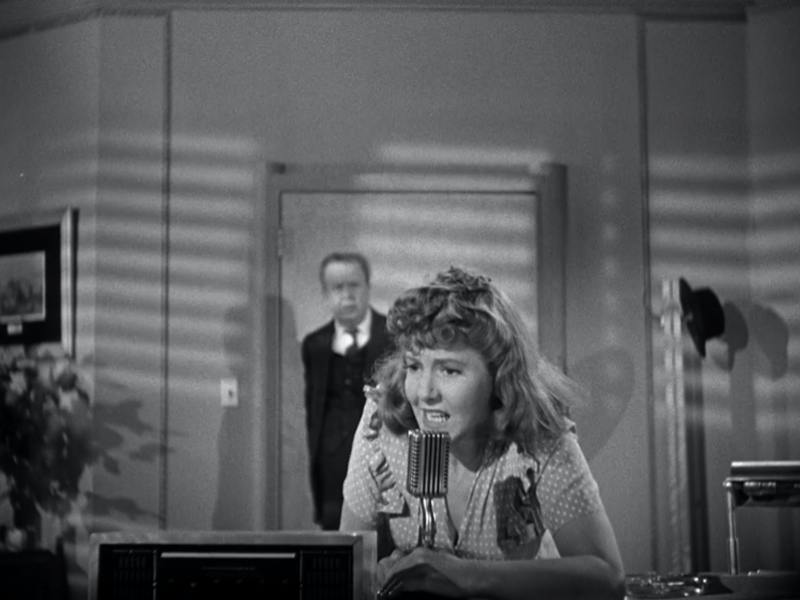
Beyond the Classics is a bi-weekly column in which Emily Kubincanek highlights lesser-known old movies and examines what makes them memorable. In this installment, she highlights The Devil and Miss Jones.
Jean Arthur and Charles Coburn were no strangers to playing relatable every-American type characters in their Classic Hollywood era careers. In Mr. Smith Goes to Washington and The Talk of the Town, Arthur embodies the wholesome working girl that Hollywood wanted to appeal to. Coburn’s upper and upper-middle-class gentlemen in movies like Heaven Can Wait portrayed an ideal for audiences to aspire to in capitalist society. Their personas were wholesome representations of the time their movies were made. One film outside of their classic filmography challenged their reputations and made for a fascinating movie, however. The Devil and Miss Jones uses their lighthearted characters to positively portray union activists and the working class struggle within a seemingly lighthearted comedy.
In this 1941 screwball comedy, Coburn stars as J.P. Merrick. a disgruntled, entitled tycoon hellbent on suppressing union organization in one of his many businesses, Neeley’s Department Store. After a group of employees hangs a Merrick dummy in protest, he decides to infiltrate their group and eradicate every employee who wants to organize. Since Merrick is so removed from the lives of his workers, no one recognizes him. He soon finds that the employees behind the strikes and protests are not the volatile agitators he thinks they will be. Miss Jones, played by Arthur, welcomes him into her and her boyfriend’s group of working-class activists with more understanding and compassion than Merrick expects. His contempt for the lower class starts to erode the more time he spends with them and he starts to see the benefits of their cause.
Films depicting labor strikes and union disputes were uncommon during Hollywood’s studio era, specifically during and after the Great Depression. In their quest to be neutral, Hollywood took a stance against any aspect of American society that challenged the status quo and tried to keep such controversial issues out of the movies. There are a handful of depictions of working-class activists in social-problem melodramas from the 1930s and 1940s, but almost all of them are unsympathetic to the cause. In movies like Riff Raff and Black Fury, union members and strikers are depicted as mob agitators, evil immigrants, or violent radicals. Their quest for workers’ rights almost always ends in disappointment or tragedy, making it seem like any action workers took against tyrant employees was a lost cause. One exception to this is John Ford’s classic adaptation of The Grapes of Wrath, where striking farmers are seen as heroic when they stand up for themselves.
Another exception is The Devil and Miss Jones, which is the only other movie made at this time in history that portrays union organizers in a positive and sympathetic light. One way this movie is able to achieve what others about workers can not is because of its genre. Comedies take usually threatening subjects and offer a funny way of discussing them. Within screwball comedy, female characters take on a more active role in the plot of movies. In the other notable screwballs His Girl Friday and It Happened One Night, the weaknesses of men are played for a joke when women take on more masculine roles than society thought they were fit for. This is why having a woman as the most dedicated activist and eventual leader of a walkout is possible within this movie and not others. It’s accepted that women can take on a leading role in a protest because, at times, it creates a laugh.
By having Miss Jones as the eventual face of union organization after her boyfriend assumes a backseat role, the movie shows a wildly different side of a societal issue. Miss Jones is a young working girl. She welcomes Merrick into their inner circle without any hostility. Despite being mistreated in her workplace, she remains optimistic and caring. Her work is for the benefit of others, not for herself. Miss Jones is there to convince Merrick, and the audience, that workers demanding respect and fair treatment are not radicals.
When she uses Merrick disguised as a new employee as an example while in a union meeting, it’s funny because she assumes he is too poor to buy his own lunch and the pinnacle victim of greed. In reality, Merrick is one of the richest men in New York. Her good nature not only creates a joke, but it also challenges the negative image that other movies about revolutionary workers perpetuated. She is the one that ends up inciting a successful walkout of every employee in the department store, not her hard-headed boyfriend whom everyone assumed would be the leader. While her role is made to create laughs, it also challenges the stereotype Hollywood created for union leaders.
Another way this movie upends the typical depiction of workers in revolt is the casting. Arthur often played working girls similar to Miss Jones, but they never challenged the status quo as she does in this movie. During this time in Hollywood, a star’s persona was their most important attribute and usually controlled every role they played. Audiences grew to expect Katharine Hepburn to play challenging, quick-witted women and Gary Cooper to be the quiet yet fearless hero. Arthur’s persona invited audiences to side with her good nature, but in this movie, they were siding with a cause society deemed parasitic. Arthur’s persona gave audiences comfort and therefore projected harmless energy onto a union leader. Miss Jones contains elements of Arthur’s normal characters: a charming quirkiness, compassion for others, desirable yet innocent sexuality, and a can-do attitude. Yet, she also challenges the ideals Arthur’s usual characters stood for.
Similarly, Coburn’s persona as an often laughable older man bleeds into the audience’s view of J.P. Merrick as well. He plays the hell out of a despicable wealthy man, but the audience is used to laughing at him in movies like Bachelor Mother or Vivacious Lady. For Hollywood stars in the studio system, it was hard to separate their personas from the characters they were playing. The goofy energy Coburn brings to his roles, combined with the genre of the movie, invites the audience to laugh at a character they are usually told to admire or even fear. If an actor like Lionel Barrymore (Mr. Potter in It’s a Wonderful Life) was to play Merrick, he might invite audiences to still believe he is a threat to the employees even in comedic situations. Despite being aware of Merrick’s high social standing, Coburn’s star power and performance keep the audience from ever really taking him seriously. This makes a laughable tycoon an accepted aspect of the movie and urges the audience to root for the employees.
The Devil and Miss Jones not only differs from this era’s usual depiction of unions but it also better represents the real union work happening in America at the time. A prologue card tells the audience that this story is entirely fictional and in no way inspired by other rich men that may resemble Mr. Merrick. However, this is a lie. The story of Neeley’s Department Store is based on a real sit-down protest demonstrated by Woolworth’s employees, who were mostly women, in several major cities in 1937. Their protest was nonviolent and enacted real change just like in the movie.
When The Devil and Miss Jones premiered in 1941, it signaled a changing tide in the industry. Workers within Hollywood were organizing just like the workers in the movie, and they were succeeding. The Screen Writers Guild members signed their first union contracts months after the film was released. This came after years of union suppression by studio heads. Studios sent out spies to infiltrate SWG meetings and out activists. Jack Warner of Warner Bros. threatened to blacklist every writer striving for union organization, just as Merrick threatened to do to his department store employees. In the end, the writers won out and workers’ rights within Hollywood drastically changed. Two years later, Olivia de Havilland won her landmark case against Warner Bros. that challenged unfair contracts common for actors at the time. Even if Hollywood didn’t want to admit it, workers had more power than was depicted in most of the movies made about them.
As audiences of today watch The Devil and Miss Jones, they can see an accurate depiction of unions during and after the Great Depression, despite the comedic nature of the movie. The Devil and Miss Jones earned two Oscar nominations, one of them for Best Screenplay and the other for Best Supporting Actor for Coburn. Yet, this movie is not one that historians look to in order to understand American society during the 1940s. It doesn’t fit within the classics usually accepted as the true depiction of the era, like Frank Capra movies or film noir. It actively challenges the nostalgia for a time believed to be filled with obedient lower-class workers content with honest hard work. Watching The Devil and Miss Jones today gives audiences a look into what was really going on in America in 1941 and still makes them laugh in the process.
Related Topics: Beyond the Classics, Jean Arthur

